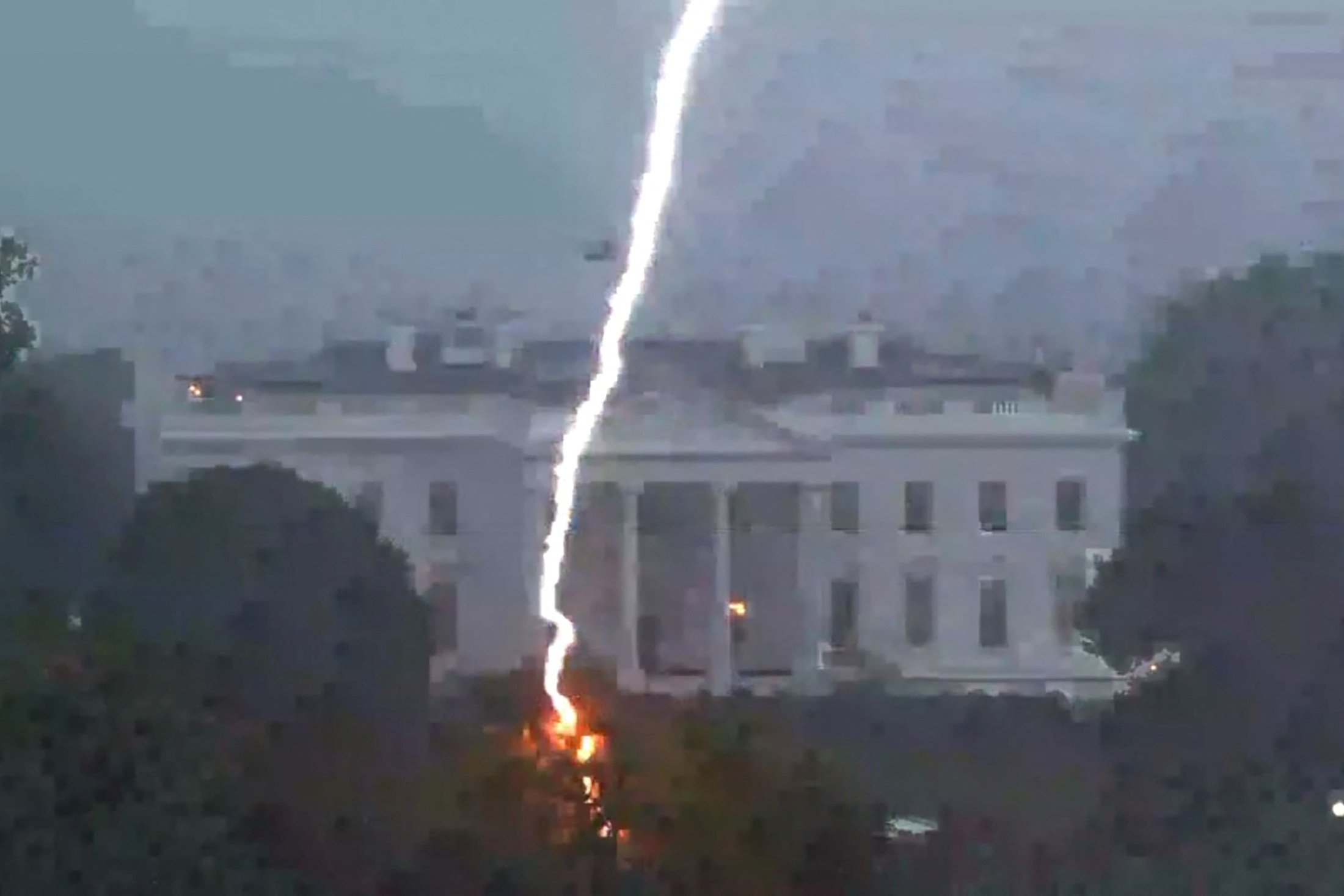As a strong rainstorm broke out in Lafayette Park on Thursday evening, three persons were struck by lightning and died immediately outside the White House; another person was gravely injured.
U.S. Secret Service and U.S. Park Police personnel treated Wisconsin citizens Donna Mueller, 75, and James Mueller, 76, but they were subsequently declared dead. Another victim, who was 29 years old and whose identity has not yet been released, also passed away, while another is still in serious condition in the hospital.
“We are saddened by the tragic loss of life after the lightning strike in Lafayette Park. Our hearts are with the families who lost loved ones, and we are praying for those still fighting for their lives,” White House press secretary Karine Jean-Pierre said in a statement on Friday.
The National Weather Service had issued a severe thunderstorm warning for the Washington region between 6:30 and 7:15 p.m. before to the lightning strike. The deadly blow occurred at 6:49 o’clock.
The incident was a “6-stroke lightning flash,” meaning six different electrical surges struck the same location in less than a half second, according to Chris Vagasky, a lightning expert with Vaisala, a business that does meteorological and environmental studies.
This was a 6-stroke #lightning flash that occurred at 6:49pm.
Between 2010 and 2021, 289 cloud-to-ground flashes occurred within 1 mile of the White House, an average of 24 per year. #DCwx#LightningSafety https://t.co/HBE5J3asL0 pic.twitter.com/4hVqw4ejmp
— Chris Vagasky ⚡️ (@COweatherman) August 5, 2022
“When you think of cloud-to-ground lightning and you look out and you see lightning flickering, each of those flickers is a stroke that comes down,” Vagasky told Yahoo News. “For negative cloud-to-ground flashes, which is what this was, there’s generally multiple strokes to a flash.”
Over 2,000 people are killed by lightning each year worldwide, with 23 deaths occurring on average in the United States. With Thursday’s killings, there have now been 11 lightning-related deaths in the United States this year.
“About 25 million lightning strikes occur in the United States each year. Although summer is when most lightning strikes, hundreds of people are “severely hurt” every year, according to the National Oceanic and Atmospheric Administration “annually here.
“Immediate medical action, including contacting 911, starting CPR, and using an AED, may be critically necessary to keep the individual alive until more sophisticated medical care arrives,” according to NOAA, if a person is struck.
According to NOAA, there are five types of lightning strikes that can be fatal: a direct strike, which most frequently happens in an open area; a side flash, which occurs when lightning strikes a taller object and “jumps from taller object to victim;” ground current, which happens when lightning strikes an object nearby and “travels outward from the strike in and along the ground surface;” conduction, which happens when lightning travels along wires, plumbing, metal fences, water faucets and showers, etc.; and streamers, which are brief electrical charges produced as a main strike develops.
It is challenging to pinpoint exactly what type of lightning strike killed the Muellers on Thursday, according to Vagasky.
“What we’ve heard is that the four victims were standing under a tree, which leads me to believe that it’s either a side flash or conduction,” he said. “Conduction could be that they’re standing right up against the tree and the electricity travels from the tree into them. Side flash would mean that they weren’t leaning on the tree, but the electricity jumped from the tree to them.”
Vagasky stressed that every kind of lightning strike is dangerous.
“Probably having a direct strike through a person is going to be the worst that you can come up against, because the electricity is going directly into you. But any lightning strike is going to have negative consequences to the human body,” he said. “Any time lightning comes into contact with the human body, you’re going to have impacts to the cardiovascular system, to the neurological system, and that’s what causes the lifelong injuries or the fatalities to people.”
On its website, the Centers for Disease Control and Prevention provides guidelines for staying safe during lightning storms.
“Keep in mind the advice to go indoors when the thunder roars. When you hear thunder, seek for a secure, enclosed shelter. Safe shelters include residences, workplaces, retail establishments, and hard-top cars with the windows down “says the CDC website.
The CDC advises the following in the event that secure shelter is not an option:
- Immediately get off elevated areas such as hills, mountain ridges, or peaks.
- Never lie flat on the ground. Crouch down in a ball-like position with your head tucked and hands over your ears so that you are down low with minimal contact with the ground.
- Never shelter under an isolated tree. If you are in a forest, shelter near lower trees.
- Never use a cliff or rocky overhang for shelter.
- Immediately get out of and away from ponds, lakes, and other bodies of water.
- Stay away from objects that conduct electricity (such as barbed wire fences, power lines, or windmills).
While agreeing that the maxim “when thunder roars, get indoors” should be kept in mind when trying to keep safe during a lightning storm, Vagasky offered an additional bit of advise.
“We always like to remind people that there is no safe place outside during a thunderstorm, and dry does not mean safe. People will try to go under a tree or under a picnic shelter or things like that to get out of the rain, but that doesn’t protect them from the lightning,” he said. “To be safe from lightning, you need to be in a fully enclosed metal vehicle, because the electricity would travel through the vehicle, or in a substantial building, one that has plumbing and electrical running through the walls, because if lightning were to strike that building, the electricity runs through the piping or the wiring in the ground and keeps it away from people.”
The source used in the creation of a news story: https://news.yahoo.com





